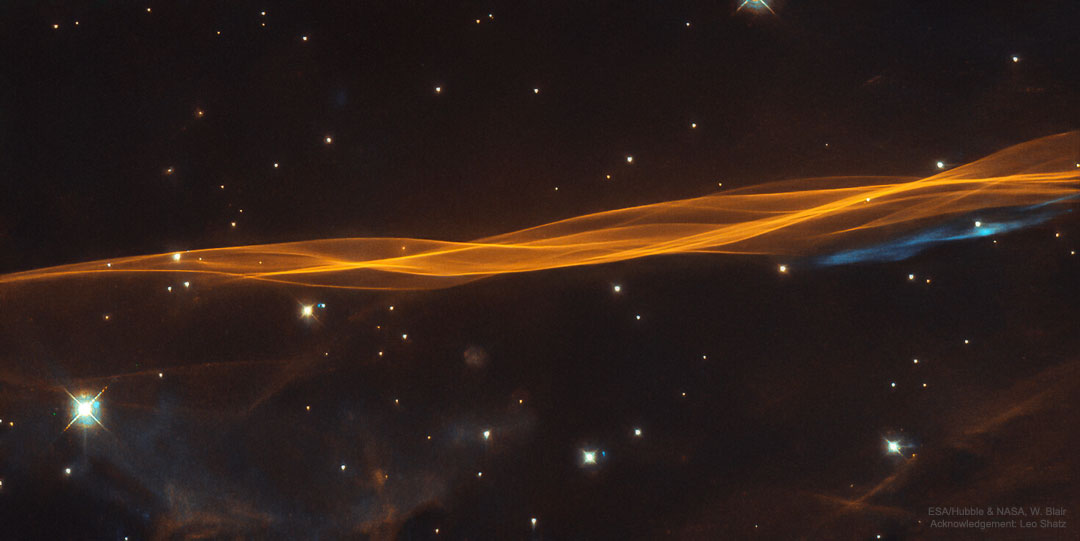2020年9月28日
Filaments of the Cygnus Loop
Image Credit: ESA/Hubble & NASA, W. Blair; Acknowledgement: Leo Shatz
Explanation: What lies at the edge of an expanding supernova? Subtle and delicate in appearance, these ribbons of shocked interstellar gas are part of a blast wave at the expanding edge of a violent stellar explosion that would have been easily visible to humans during the late stone age, about 20,000 years ago. The featured image was recorded by the Hubble Space Telescope and is a closeup of the outer edge of a supernova remnant known as the Cygnus Loop or Veil Nebula. The filamentary shock front is moving toward the top of the frame at about 170 kilometers per second, while glowing in light emitted by atoms of excited hydrogen gas. The distances to stars thought to be interacting with the Cygnus Loop have recently been found by the Gaia mission to be about 2400 light years distant. The whole Cygnus Loop spans six full Moons across the sky, corresponding to about 130 light years, and parts can be seen with a small telescope toward the constellation of the Swan (Cygnus).
Tomorrow’s picture: tilted planets
天鹅座环的云气丝
影像提供: ESA/Hubble & NASA, W. Blair; 致谢: Leo Shatz
说明: 扩张中的超新星前沿有什么?大约在20,000年前的石器时代晚期,人类应见到一例剧烈的恒星爆炸事件,从而产生不停扩张的激波,而这些丝缕状的天体,就是激波前沿受到剧烈压缩、看似兼具细致和脆弱质感的星际云气丝。这幅由哈勃太空望远镜所记录的主题影像,是这个名为天鹅座环(亦称面纱星云)的外沿之特写。这道因其内受激氢原子气体发光,而现身的丝缕状激波前沿,以每秒约170公里的高速向影像顶缘移动。咸认与天鹅座环有互动的恒星之距离,最近刚由盖亚任务测定,其值约为2,400光年远。因此,位在天鹅座方向,用小望远镜即可见,在天空的跨幅约有6个满月的天鹅座环,其宽度相当于130光年。
明日的图片: tilted planets







